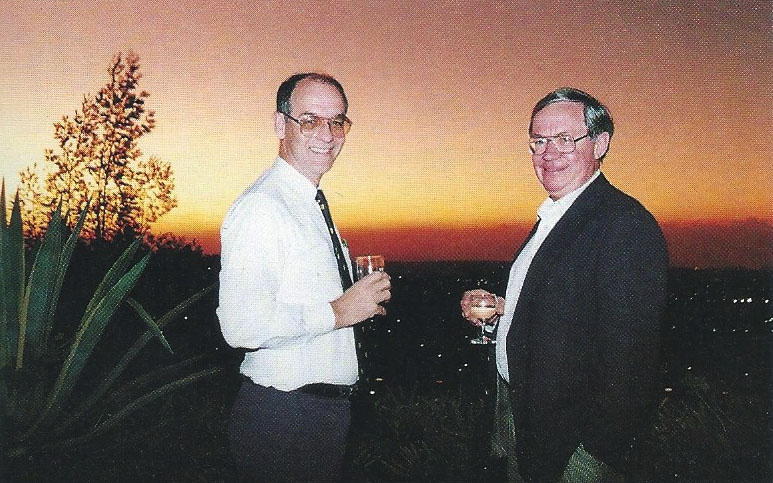Allister Sparks died Sept. 19. The former editor of The Rand Daily Mail helped lead the fight against the apartheid government of South Africa. The New York Times obituary omitted one of his major accomplishments: founding the Institute for the Advancement of Journalism in Johannesburg in 1992.
Allister believed with Thomas Jefferson that a new democracy could only survive with a free press. He predicted the fall of the apartheid government in 1994 elections, followed by a period of adjustment as Black journalists and managers replaced Whites, who dominated the field. Allister conceived an ambitious long-range plan to re-educate all Black South African journalists.
He decided to visit his friend, Bob Haiman, the director of Poynter in 1991, to ask for help. He wanted to base his institute on the Poynter model, high-quality re-education for mid-career reporters and editors, with some modifications for South African traditions, conditions, and practice. Haiman and I met with him and approved his plans with great enthusiasm.
He also wanted advice on how to raise $50,000 to start the institute. Haiman agreed to help with faculty visits to South Africa, and I volunteered to go first. I told Allister that he didn’t need $50,000, he needed to ask for half a million, and invited him to dinner that night to meet my wife Joan, who would tell him how to raise the money. She did, and he did.
Allister invited the Frys to create a seminar three weeks before opening the Institute in 1992. He selected 24 mid-level talented and engaged South African journalists to serve as his visiting faculty, none of whom had any experience teaching. They came from all categories: Black, White, Indian, male, female, reporters, editors, columnists and one photographer.
Joan and I arrived in Johannesburg the week before to get a feel for South Africa. We surveyed the new Institute headquarters, a rundown mansion in the Parkstown section. The unassembled furniture arrived in crates, and we discovered that the Institute had no tools, not even one screwdriver. So we put the desks and tables together using coins as screwdrivers. It took all night, and the seminar started the next morning.
The exhausting program included four 90-minute sessions on each of five days. Most of the material was entirely new to the participants. I had to understand South Africa’s version of the British style of organizing news flow while melding it with other models from all over the world of journalism.
The racial mix created an edgy atmosphere. Some of the students were old enemies; one pair had not spoken to each other for 20 years. One had been released from a prison in Zimbabwe the day before. Another spent 24 years in prison and had the scar of an axe chop across his face. So I got the students to argue with me rather than with each other.
We conducted a coaching exercise early. We divided into groups of three, roughly balanced racially. Pairs of participants interviewed each other, with a third as an observer. We rotated the roles so everyone had the same experiences. Then they debriefed on what they had learned. One Black editor testified that, until this exercise, he had never known that White people had emotions.
The room rocked with shock, which turned into epiphanies. They all discovered their heads (and hearts) were full of assumptions about each other, their ways of thinking and writing, their lives and purposes.
After two days, Sparks and I decided that the mission he envisioned for the Institute was too narrow. Instead of retraining all Black journalists, the Institute had to retrain all South African journalists, regardless of color.
Late Friday afternoon, the seminar ended with a critique and congratulations. Then the participants requested one more session the next morning. I asked, “You’ve been listening to me blather all week, and you want more?”
They wanted another morning to discuss the future. They understood how to use their new skills and knowledge and tools after the apartheid government would fall in 1994, but they didn’t know how to get from 1992 to 1994.
The Saturday session had three parts: What is South African journalism like now, what kind of journalism did they want after 1994, and how would they create it in the intervening years?
The Institute was launched, South African journalism was relaunched, and Sparks’ dream of democracy was realized.






